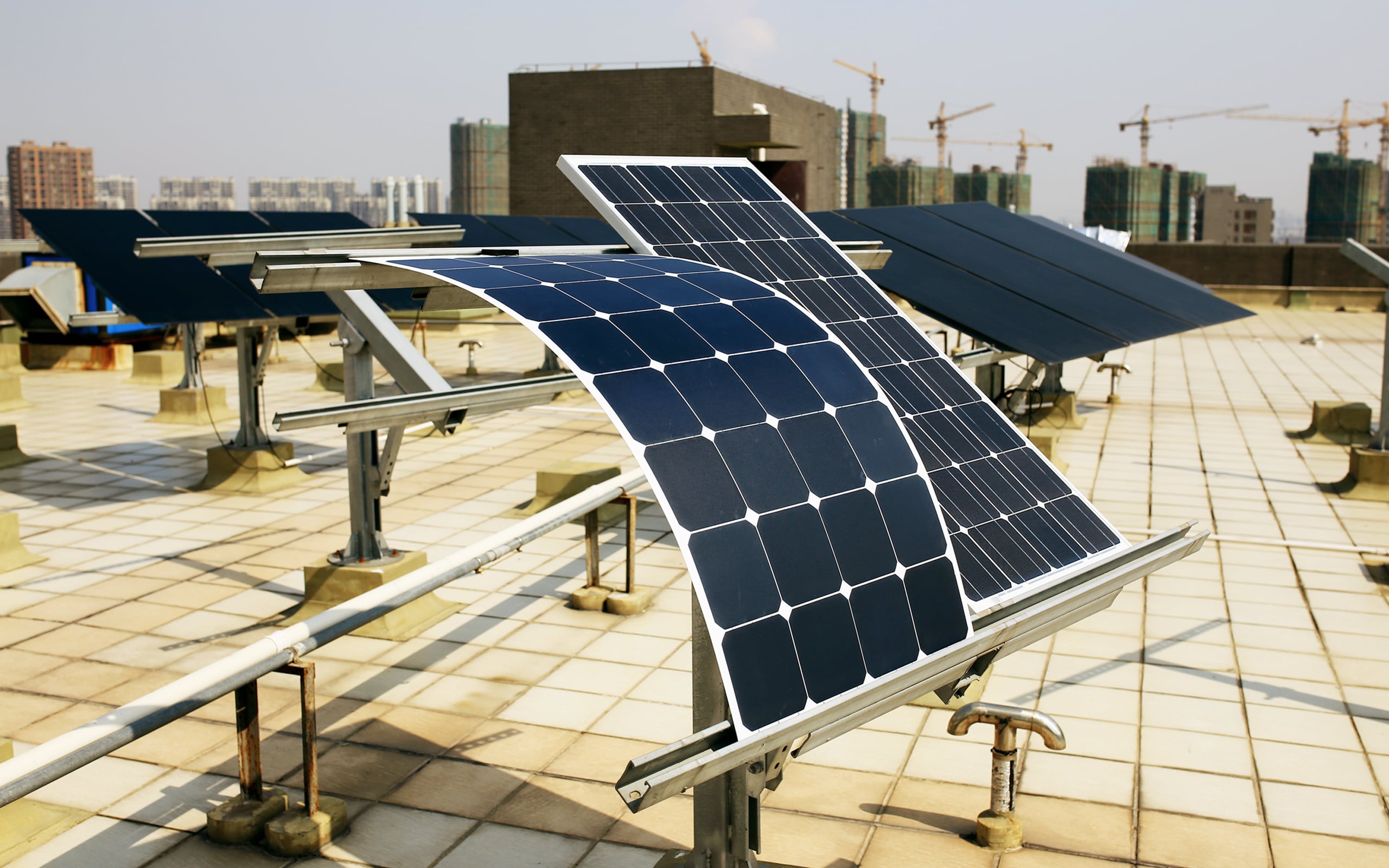Thin-Film Solar Panels
What is thin-film solar panel?
Thin-film solar cells are second-generation solar cells, which are made by depositing one or more thin layers or thin films (TF) of photovoltaic materials on a substrate (such as glass, plastic, or metal). Thin-film solar cells have found commercial applications in a variety of technologies, including cadmium telluride (CdTe), copper indium gallium diselenide (CIGS), and amorphous thin-film silicon (a-Si, TF-Si).
Film thicknesses range from a few nanometers (nm) to tens of micrometers (µm), which are much thinner than competing thin-film technologies. Traditional first-generation crystalline silicon solar cells (c-Si) use up to 200 microns thick. This makes thin-film batteries flexible and lighter in weight. It is used for building integrated photovoltaics and as a semi-transparent photovoltaic glass material that can be laminated to windows. Other commercial applications use rigid thin-film solar panels (staggered between two glass panels) in some of the world’s largest photovoltaic power plants.
Types of thin-film solar panel
The difference between thin film solar cells and single crystal and polycrystalline is that the thin film can be made of different materials.
There are 3 types of thin-film solar cells:
1. Cadmium telluride (CdTe) film
This is the second most used type of solar cell in the world after crystal cells.
Unlike a-Si solar cells, this type of solar cell is made of a special compound called cadmium telluride, which is very good at capturing sunlight and converting it into energy.
However, CdTe solar cells have some disadvantages, such as:
- Rarity: Tellurium is very rare and difficult to produce on a large scale
- Toxicity: Cadmium is one of the most toxic elements in the world, so special attention should be paid to handling this toxic ingredient.
2. Amorphous silicon (a-Si) film
This type of film is made of amorphous silicon (a-Si), which is a type of amorphous silicon that is easier to produce than monocrystalline or polycrystalline solar cells.
3. Copper Indium Gallium Selenide (CIGS)
The last type of thin film battery is CIGS solar panels.
These batteries are made by stacking layers of copper, indium, gallium, and selenide together to form a powerful semiconductor that can effectively convert sunlight into energy.
How are thin-film solar cells made?
Thin-film solar cells are by far the simplest and fastest type of solar panel to manufacture.
Each thin-film solar panel is composed of 3 main parts:
Photovoltaic material: This is the main semiconductor material, responsible for converting sunlight into energy such as CdTe, a-Si or CGIS.
Conductive sheet: a layer of conductive material such as aluminum is needed to prevent power loss and improve conductivity
Protective layer: In order to extend the service life of solar modules, a thin layer of high-quality plastic glass is added to the top of the system to improve durability and protect it from environmental influences
It doesn’t matter what type of thin film solar cells you make, because they are all made in the same way.
